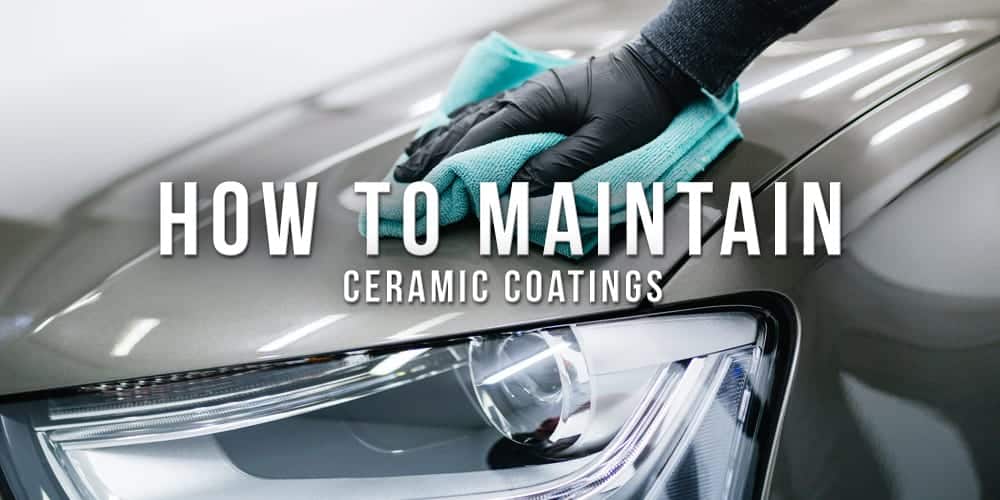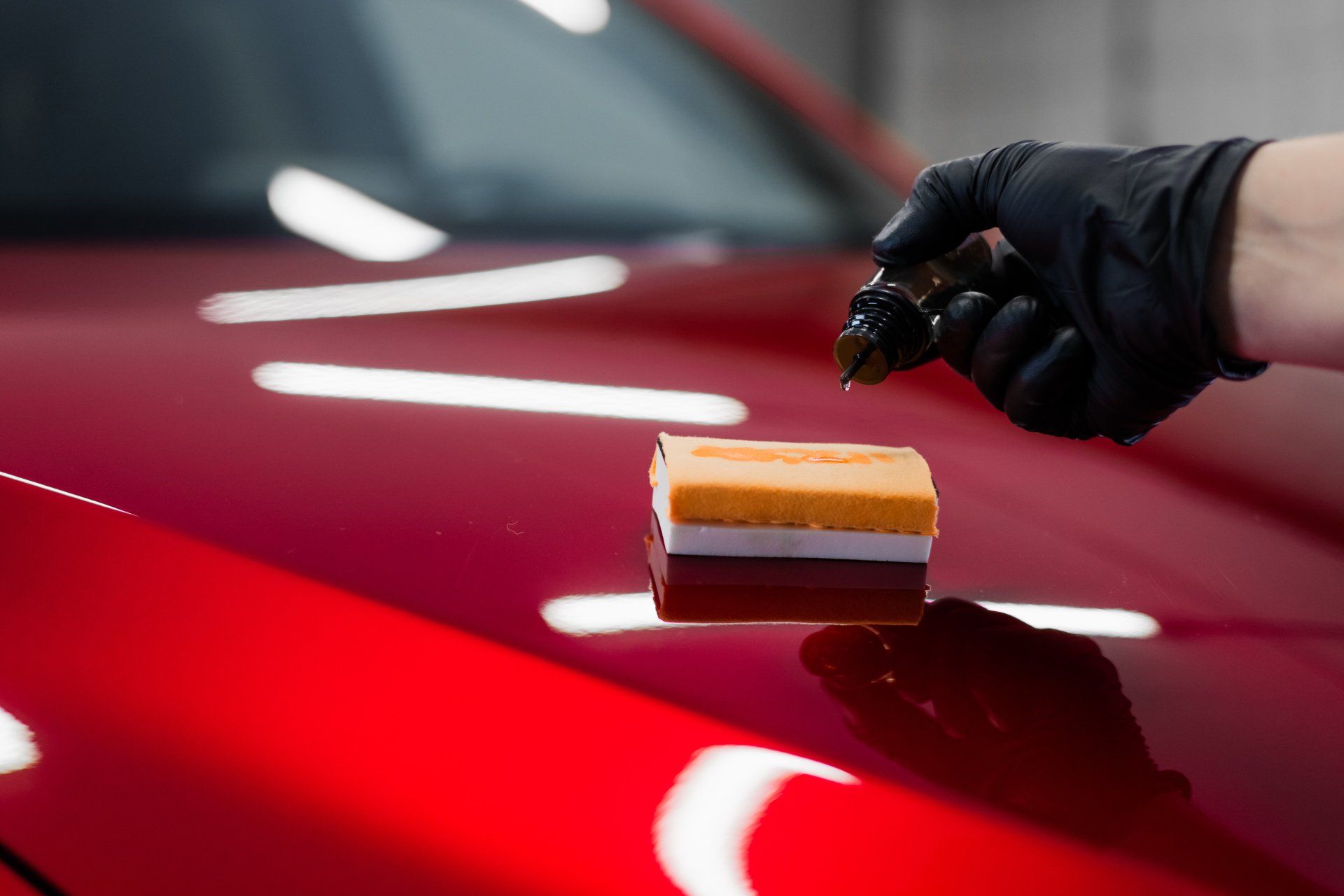How Final Touch Auto Works Ceramic Coatings Reduce Wash Time by 50%
How Final Touch Auto Works Ceramic Coatings Reduce Wash Time by 50%
Blog Article
The Ultimate Overview to Ceramic Coatings: Enhancing Your Auto's End up and Toughness
Ceramic finishings could be the option you've been browsing for if you're looking to elevate your automobile's look and security. These innovative coatings bond with your vehicle's paint, creating a resilient obstacle against ecological damage. How do they stack up versus standard wax? Understanding the benefits and application procedure can make a considerable difference in your auto care routine. Let's explore what makes ceramic coverings a rewarding investment for your automobile.
What Are Ceramic Coatings?
Ceramic layers are sophisticated safety layers that boost your automobile's outside. They're made from a liquid polymer that chemically bonds with your car's paint, creating a durable shield. Unlike standard wax or sealants, which wear away in time, ceramic coverings provide long-lasting protection versus environmental contaminants like UV rays, dirt, and chemicals.When you use a ceramic covering, you're spending in a barrier that drives away water, making it simpler to cleanse your car and keeping it looking newer for longer. This technology helps preserve the stability of your paint, lowering the threat of scrapes and oxidation.Ceramic layers can be found in different formulations, each developed to satisfy various needs and preferences. You can choose a do it yourself kit or decide for expert application, depending on your comfort level and budget. In general, ceramic coatings stand for a sophisticated solution for keeping your vehicle's aesthetic appeal and long life.
Benefits of Ceramic Coatings
When you purchase a ceramic covering, you expose a variety of advantages that exceed plain visual appeals. To start with, it supplies extraordinary security against ecological impurities like dirt, bird droppings, and UV rays, keeping your car's paint looking brand-new much longer. You'll discover that maintenance comes to be much easier, as the hydrophobic properties cause water and gunk to move off easily. This indicates much less time invested cleaning and detailing your vehicle.Additionally, ceramic coverings can improve the glossiness of your vehicle's coating, giving it that display room shine. They additionally supply resistance to scratches and swirl marks, which helps keep your car's resale value. With a ceramic coating, you're not just shielding your financial investment; you're also enhancing its general look and longevity. Ultimately, this advanced technology assurances your vehicle sticks out while appreciating long-lasting benefits that traditional waxes just can not match.
The Application Process: Just How to Use Ceramic Coatings
Using a ceramic layer entails numerous key steps to ensure suitable results. Initially, thoroughly wash your cars and truck to remove any kind of dirt, gunk, or pollutants. This guarantees the surface area is tidy and ready for the finishing. Next, sanitize the paint making use of a clay bar to remove embedded particles. Later, evaluate the paint for imperfections and brighten it to attain a smooth surface.Once your cars and truck's surface area is prepped, apply the ceramic coating in little sections. Make use of an applicator pad to spread out the layer uniformly, complying with the maker's guidelines. Permit the coating to cure for the suggested time, normally between one to 2 hours, depending upon the product.Finally, avoid washing your automobile for a minimum of a week to allow the coating bond properly. Following these steps will certainly assist you accomplish a durable, high-gloss finish that secures your car for several years ahead.

Comparing Ceramic Coatings to Standard Wax
After ensuring your car's surface area is completely prepped with a ceramic covering, it's time to consider just how this modern-day option compares to traditional wax. Ceramic coatings supply a robust layer of security that lasts for years, while wax typically offers just a couple of weeks of shine. You'll see that ceramic finishings bond with your paint, developing a hydrophobic surface that wards off water and dirt, making upkeep easier.In contrast, conventional wax sits on top of the paint and requires constant reapplication. With ceramic finishings, you obtain superior scratch resistance and UV protection, assisting to stop fading and oxidation. While the preliminary financial investment for a ceramic coating is greater, the lasting advantages commonly exceed the costs. If you're looking for resilience and improved gloss, ceramic finishes are a smart choice over traditional wax.
Maintenance Tips for Your Ceramic Covered Vehicle
To keep your ceramic-coated lorry looking beautiful, routine upkeep is vital. Begin with a gentle wash using a pH-balanced hair shampoo; stay clear of severe cleaning agents that can degrade the finishing. Use a microfiber wash mitt to stop scratches and constantly wash extensively to get rid of any soap residue.After washing, dry your auto with a soft microfiber towel to stay clear of water spots. Take into consideration using a ceramic upkeep i was reading this spray every few months to enhance the finish's hydrophobic homes and add an added layer of protection.It's likewise important to stay clear of automated cars and truck cleans with abrasive brushes, as they can damage the coating. Instead, choose hand cleans or touchless laundry options. In addition, frequently inspect your vehicle for contaminants like tree sap or bird droppings and address them promptly to avoid etching. Complying with these ideas will certainly help maintain the luster and durability of your ceramic-coated lorry for years to come.
Usual Myths About Ceramic Coatings
In spite of the excellent advantages of ceramic finishings, a number of myths can develop complication for automobile proprietors. One usual mistaken belief is that ceramic finishings eliminate the demand for upkeep. While they do provide improved protection, regular washing and care are still vital to maintain that high-gloss finish.Another myth is that these finishes are scratch-proof. While they offer a solid layer of defense versus minor scrapes, they can not hold up against severe impacts or unpleasant materials.Many additionally believe that ceramic finishings will certainly make their cars unsusceptible to all pollutants. In truth, they drive away dust and water yet will not protect against issues like bird droppings or tree sap from creating damage if left unattended.Lastly, some assume that applying ceramic coverings is a DIY job any person can take care of, but achieving a perfect application typically requires professional competence to guarantee peak outcomes.
Choosing the Right Porcelain Finishing for Your Automobile
Just how do you select the appropriate ceramic covering for your vehicle? Begin by taking into consideration the degree of protection you need. If your auto faces harsh climate or constant road trips, go with a premium finish that uses superior longevity and resistance to scratches, UV rays, and chemical stains.Next, believe about the application approach. Some coverings call for expert installation, while others are DIY-friendly. If you're experienced, a DIY product may conserve you money, but for the most effective outcomes, a professional can guarantee proper application.Don' t fail to remember to inspect the long life of the coating. Some last a few years, while others can safeguard for a decade or even more. Review reviews and testimonials to gauge customer complete satisfaction. By weighing these elements, you'll discover a ceramic finishing that not just boosts your car's appearance but article additionally offers lasting defense.
Often Asked Concerns
The Length Of Time Do Ceramic Coatings Last usually?
Ceramic finishes normally last anywhere from two to 5 years, depending upon variables like application, maintenance, and environmental conditions. You'll want to follow appropriate care regimens to optimize their longevity and efficiency.
Can Porcelain Coatings Be Applied Over Paint Scratches?
You can't apply ceramic coatings over paint scrapes successfully. It's Our site best to repair any type of scratches initially, making sure a smooth surface - Final Touch Auto Works Ceramic Coatings. This way, the finish bonds appropriately and gives perfect security for your vehicle's finish
Are Ceramic Coatings Safe for All Automobile Surfaces?
Ceramic coatings are generally secure for many automobile surfaces, including paint, glass, and wheels. However, it is critical to examine particular product guidelines, as some layers could not be ideal for specific materials or coatings.

Will Porcelain Coatings Protect Against UV Damages?

Can I Do Touch-Ups on Ceramic Coated Surface Areas?
You can do touch-ups on ceramic layered surface areas, however it's essential to make use of compatible products. Verify the location is clean and comply with appropriate application strategies to keep the finish's integrity and performance. Unlike standard wax or sealers, which put on off over time, ceramic finishes provide resilient security versus ecological impurities like UV rays, dust, and chemicals.When you apply a ceramic layer, you're spending in a barrier that repels water, making it simpler to cleanse your automobile and maintaining it looking more recent for longer (Final Touch Auto Works Ceramic Coatings). Afterward, inspect the paint for blemishes and polish it to accomplish a smooth surface.Once your cars and truck's surface area is prepped, use the ceramic finish in little sections. Enable the coating to heal for the suggested time, usually between one to two hours, depending on the product.Finally, prevent cleaning your vehicle for at least a week to allow the layer bond appropriately. Think about using a ceramic upkeep spray every couple of months to improve the finishing's hydrophobic residential properties and add an extra layer of protection.It's likewise wise to prevent automatic vehicle cleans with unpleasant brushes, as they can harm the finishing. Ceramic coverings are generally risk-free for the majority of automobile surfaces, consisting of paint, glass, and wheels
Report this page